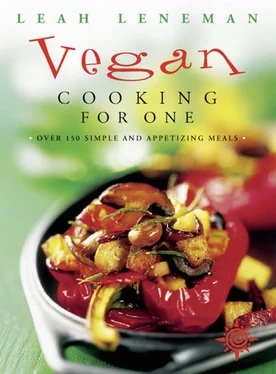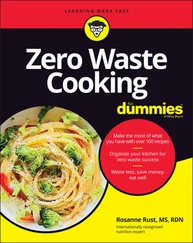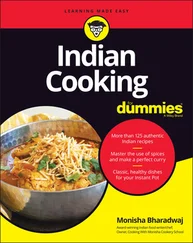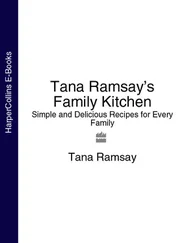Certain vegetables are more awkward for one person to use, for example cauliflower. I have tried always to incorporate such vegetables into more than one recipe in a week’s menu so that you are not left with a large chunk of it in the fridge with no idea what to do with it. Celery is a particular nuisance I find because a little of it goes very nicely in some dishes but as a whole head is difficult to use up. Spring onions (scallions) are arguably in the same category except that they will keep in the fridge for some weeks.
I know that some single people prefer to keep a stock of frozen vegetables, but I can’t see the point when it is easier (and a lot cheaper) to buy half a dozen fresh Brussels sprouts than to pull out the same number of frozen ones. The only exception I make is green beans or peas when they are out of season.
Many of the recipes in this book call for canned beans. The reason is simply that unless you have a pressure cooker, cooking dried beans takes an awfully long time, which may be acceptable if you are cooking for a family but not for a single person. Unlike vegetables, which lose vitamins (not to mention flavour) when canned, protein is not lost in the canning process, so canned beans are as nutritious as freshly cooked ones. Admittedly they can be high in salt content, and some British brands add sugar as well, but it is easy enough to rinse the beans off before using them. There is no doubt, however, that canned beans work out a lot more expensive than dried ones, so if money is more important than time then by all means use home-cooked beans instead of canned ones: a small can or half a large one is equivalent to 2 oz (55g) dried beans, and an ordinary can to about 4 oz (115g).
Butter (lima) beans and red kidney beans are available in small cans, which obviates the need to use the other half of a can later in the week. All other beans are available only in larger cans so I have used them in two recipes in the relevant week. The beans not used in the first recipe should not be left in the can but transferred to a jar and refrigerated until required.
Certain pulses – e.g., lentils, aduki beans, split peas, and black-eyed peas – are not readily available in cans and are quite quick to cook so in those cases the dried varieties are called for.
There are basically two types of salad. (Well, three if you count the typical British salad of limp lettuce leaves, a slice of tomato and one of cucumber, topped with something sliced, with vinegary salad cream over it, but anyone reading this book is unlikely to think of such a thing when talking of salads.) The first kind of real salad is a meal in itself. Such salads feature as recipes for some weekend lunches.
The second kind is a side salad, i.e., it accompanies a dish in the same way as cooked vegetables. Many of the recipes in this book would be nice accompanied by a salad even when this is not specified. It is easy enough to make a salad for one person. Some lettuce or cress, a small grated carrot, a few sliced button mushrooms – that alone makes a very palatable salad even if there is nothing else to add to it, and if there is celery, a few spring onions (scallions), green pepper or other leftovers in the fridge, so much the better. A few chopped black olives really zing up a salad. The easiest dressing for this type of salad is a little oil – especially virgin olive oil – mixed with a little cider vinegar or lemon juice, perhaps with a pinch of mustard, and any additional seasoning desired. It is useful to have a ready-made vinaigrette dressing handy, but unfortunately most supermarket ones are made with malt vinegar which is anything but nutritious (or even nice). Fortunately, more wholefood shops are beginning to stock good ones.
It has become easier to obtain fresh herbs of late, and some people grow their own. Obviously fresh herbs have a wonderful flavour, and anyone who has access to them will certainly want to use them, but the majority will find it much easier to keep a variety of dried herbs in stock. When herbs are called for in recipes it is dried herbs that are meant.
As far as spices are concerned, although there is nothing intrinsically wrong with the mixture of spices which go to make up ‘curry powder’, far more interesting variations of flavour can be obtained by using the spices themselves. For the best flavour, coriander and cumin seeds are much better bought whole and ground in a small pestle and mortar when required. I realize such a suggestion may seem surprising in a book which is aimed at simple and quick recipes, but the average time required to grind a teaspoonful of spice cannot be more than about five seconds, and it is especially beneficial when cooking for one simply because these spices are likely to be stored for a long time, since only a little is required for any one dish, and if bought already powdered then much of the flavour will gradually be lost.
If used straight from the packet, brown rice generally takes about 45 minutes to cook, which makes it less than ideal for a really quick meal. However, if it is covered with boiling water in the morning and left to soak all day then it will only take about 20–25 minutes. (The method is to drain the soaking water, cover the rice with water about a ¼-inch (5mm) over the top and a little salt, bring to the boil, lower heat, cover pan and simmer until all the water is absorbed.) This is all very well for well-organized people but rather annoying if you arrive home in the evening to realize you have forgotten the soaking step. There are now several brands of brown rice available in supermarkets which require no soaking and take only 25 minutes or so to cook. The method with these types of rice is different: the rice is covered with lots of boiling water and simmered uncovered before being drained and more hot water poured over it. As the water is not all absorbed, this type of rice is not suitable for pilaus and similar dishes which require the flavouring to be incorporated into the rice. These supermarket packets also work out rather more expensive than rice bought at a wholefood shop. The best compromise may be to use the latter normally but keep the supermarket kind in stock for emergencies or when the soaking has been forgotten. I find about 3 oz (85g) wholefood shop brown rice or 2½ oz (70g) supermarket brown rice to be right for one serving.
Wholemeal (whole wheat) pasta is available now in a variety of shapes and sizes. Not all of the packets provide information on cooking time. Twelve to fifteen minutes seems to be about the average time required for most types of wholemeal (whole wheat) pasta to cook.
Most Chinese noodles are egg noodles, but Chinese shops (and some supermarkets) sell a variety of eggless noodles, some made from wheat flour and some from rice flour. Wholemeal (whole wheat) Chinese-style noodles are available at some health food stores. Most need little or no cooking, making them an ideal food for those in a hurry.
Dessert is not a necessary part of anyone’s diet, and many people are perfectly happy to end a meal with a savoury taste. Unfortunately, there are many of us brought up in such a way that a meal simply is not complete unless it ends with a sweet. For those of us in that situation all that can be done is to try and make the sweet course a healthy addition to the diet.
Fresh fruit is the most commonly suggested healthy dessert, but for die-hard sweet-toothed types, a fresh apple, pear or banana, which may be very welcome in the morning or between meals, does not constitute a real dessert. That is not to say there aren’t some fresh fruits which do. In the summer months fresh strawberries, raspberries, and similar soft fruit – particularly if served with cashew or coconut cream – certainly does, also sweet melons and the like. In the winter tropical fruits like fresh pineapple or mango are definitely reserved for dessert. Another winter fruit which can be classified as a dessert is the persimmon (also called Sharon fruit). For those who have not tried this fruit, it should be eaten when it is so soft it feels almost rotten. The skin is peeled off and the inside is unbelievably sweet.
Читать дальше












